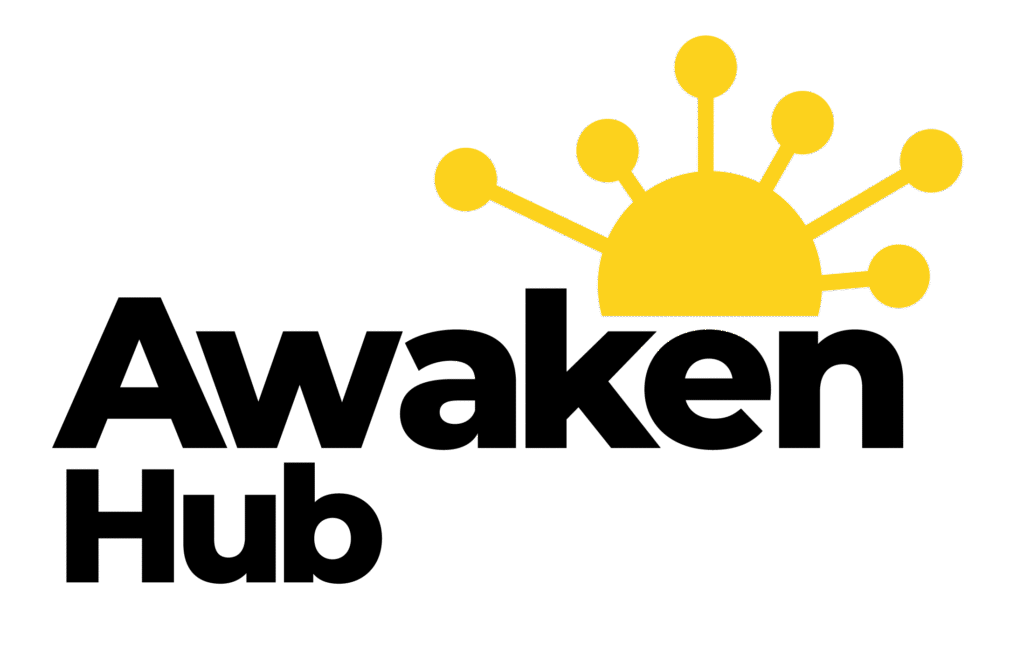Maximising Online Visibility with Search Engine Marketing
Search Engine Marketing (SEM) is a powerful tool that can significantly enhance your online presence and drive traffic to your…
Search Engine Marketing (SEM) is a powerful tool that can significantly enhance your online presence and drive traffic to your website. At its core, SEM encompasses a variety of strategies aimed at increasing visibility on search engine results pages (SERPs). This includes both paid advertising and organic search strategies, allowing you to reach potential customers at various stages of their buying journey.
By understanding the nuances of SEM, you can effectively position your brand in front of users actively searching for products or services similar to yours. As you delve deeper into SEM, it becomes clear that it is not merely about placing ads on search engines. It involves a comprehensive approach that combines keyword research, ad creation, and performance analysis.
The ultimate goal is to ensure that your marketing efforts yield a high return on investment (ROI). By leveraging the right tools and techniques, you can create campaigns that not only attract clicks but also convert those clicks into meaningful customer interactions. This understanding lays the groundwork for a successful SEM strategy that can adapt to the ever-changing digital landscape.
Summary
- Search Engine Marketing (SEM) involves using paid advertising to increase visibility on search engine results pages.
- Utilising relevant keywords and phrases is crucial for SEM success, as they help target the right audience.
- Creating compelling ad copy is essential to attract clicks and drive traffic to your website.
- Optimising landing pages is important to ensure a seamless user experience and increase conversion rates.
- Implementing Pay-Per-Click (PPC) advertising allows for targeted and cost-effective marketing campaigns.
Utilising Keywords and Phrases
Keywords and phrases are the backbone of any successful SEM campaign. They are the terms that potential customers type into search engines when looking for information, products, or services. To effectively utilise keywords, you must first conduct thorough research to identify which terms are most relevant to your business.
This involves analysing search volume, competition, and user intent. By selecting the right keywords, you can ensure that your ads appear in front of the right audience at the right time. Once you have identified your target keywords, it is essential to incorporate them strategically into your ad copy and landing pages.
This not only helps improve your ad’s relevance but also enhances its quality score, which can lead to lower costs per click and better ad placements. Additionally, consider using long-tail keywords—more specific phrases that may have lower search volumes but often result in higher conversion rates. By focusing on these niche terms, you can attract a more targeted audience that is more likely to engage with your offerings.
Creating Compelling Ad Copy

Crafting compelling ad copy is crucial for capturing the attention of potential customers in a crowded digital marketplace. Your ad copy should be concise yet informative, clearly communicating the value proposition of your product or service. Start by highlighting the unique features or benefits that set your offering apart from competitors.
Use persuasive language that resonates with your target audience and addresses their pain points or desires. In addition to being informative, your ad copy should also include a strong call to action (CTA). A well-placed CTA encourages users to take the next step, whether it’s visiting your website, signing up for a newsletter, or making a purchase.
Experiment with different CTAs to see which ones resonate best with your audience. Remember, the goal is not just to attract clicks but to drive meaningful engagement that leads to conversions. For more information on crafting compelling ad copy, you can visit this WordStream article.
Optimising Landing Pages
| Metrics | Data |
|---|---|
| Conversion Rate | 15% |
| Bounce Rate | 25% |
| Average Time on Page | 2 minutes |
| Click-Through Rate | 10% |
Once users click on your ad, they are directed to a landing page that should seamlessly continue the conversation initiated by your ad copy. Optimising landing pages is essential for ensuring that visitors have a positive experience and are more likely to convert. Start by ensuring that your landing page aligns with the messaging of your ad.
Consistency in language and visuals helps build trust and keeps users engaged. Moreover, focus on creating a user-friendly design that facilitates easy navigation. This includes using clear headings, bullet points, and images that enhance the overall experience without overwhelming visitors.
Additionally, consider implementing A/B testing to determine which elements of your landing page perform best.
Implementing Pay-Per-Click Advertising
Pay-Per-Click (PPC) advertising is one of the most effective components of SEM, allowing you to bid for ad placements on search engines. With PPC, you only pay when someone clicks on your ad, making it a cost-effective way to drive traffic to your website. To implement a successful PPC strategy, start by setting clear goals for your campaign—whether it’s increasing brand awareness, generating leads, or driving sales.
When creating your PPC campaigns, it’s essential to choose the right bidding strategy based on your objectives. You can opt for manual bidding, where you set your own bids for each keyword, or automated bidding strategies that adjust bids based on performance metrics. Additionally, regularly monitor your campaigns to identify which keywords and ads are performing well and which may need adjustments.
By staying proactive in managing your PPC efforts, you can optimise your budget and achieve better results over time.
Utilising Search Engine Optimisation

While SEM primarily focuses on paid advertising, integrating Search Engine Optimisation (SEO) into your strategy can enhance your overall visibility online. SEO involves optimising your website’s content and structure to improve its ranking in organic search results. By focusing on both paid and organic strategies, you can create a comprehensive approach that maximises your reach.
To effectively utilise SEO within your SEM strategy, start by conducting keyword research similar to what you did for your paid campaigns. Incorporate these keywords naturally into your website’s content, meta descriptions, and headers. Additionally, ensure that your website is mobile-friendly and has fast loading times—factors that significantly impact user experience and search rankings.
By aligning your SEO efforts with your SEM campaigns, you can create a cohesive strategy that drives traffic from multiple sources.
Monitoring and Analysing Campaign Performance
Monitoring and analysing the performance of your SEM campaigns is vital for understanding what works and what doesn’t. Utilise analytics tools to track key performance indicators (KPIs) such as click-through rates (CTR), conversion rates, and return on ad spend (ROAS). By regularly reviewing these metrics, you can gain insights into user behaviour and make informed decisions about future campaigns.
In addition to quantitative data, consider gathering qualitative feedback from users as well. This could involve conducting surveys or analysing customer reviews to understand their experiences with your ads and landing pages. By combining both quantitative and qualitative insights, you can develop a more holistic view of your campaign performance and identify areas for improvement.
Adapting and Refining Strategies for Continued Success
The digital landscape is constantly evolving, making it essential for you to adapt and refine your SEM strategies regularly. Stay informed about industry trends and changes in search engine algorithms that may impact your campaigns. This proactive approach allows you to pivot quickly when necessary and seize new opportunities as they arise.
Moreover, don’t hesitate to experiment with new tactics or platforms as part of your ongoing strategy refinement. Whether it’s exploring new ad formats or targeting different demographics, being open to change can lead to innovative solutions that enhance your overall performance. By continuously learning from both successes and failures, you can ensure that your SEM efforts remain effective and aligned with your business goals over time.
In conclusion, mastering Search Engine Marketing requires a multifaceted approach that encompasses various strategies—from keyword utilisation to performance analysis. By understanding each component and how they interconnect, you can create a robust SEM strategy that drives traffic, engages users, and ultimately leads to conversions. Embrace the dynamic nature of digital marketing and remain committed to refining your tactics for sustained success in an ever-competitive landscape.
Search engine marketing is a crucial aspect of digital marketing for small businesses. It involves using strategies like search engine optimisation (SEO) to improve a website’s visibility on search engine results pages. For small businesses looking to enhance their online presence, understanding how to use SEO effectively is essential. An article on how to use SEO for small business provides valuable insights and tips on implementing SEO tactics to drive traffic and increase conversions. Additionally, partnering with a reputable SEO agency like the one mentioned in Dublin Marketing SEO Agency can further boost a small business’s online visibility. Developing a local business SEO strategy, as discussed in this article, can also help small businesses target their local audience effectively.
FAQs
What is search engine marketing (SEM)?
Search engine marketing (SEM) is a digital marketing strategy used to increase a website’s visibility in search engine results pages (SERPs) through paid advertising. It involves using techniques such as pay-per-click (PPC) advertising, search engine optimization (SEO), and other methods to drive traffic to a website.
How does SEM differ from SEO?
Search engine marketing (SEM) includes both paid advertising and search engine optimization (SEO), while SEO focuses solely on optimizing a website to improve its organic search rankings. SEM encompasses a broader range of strategies, including paid search advertising, to increase a website’s visibility in search engine results.
What are the benefits of SEM?
Some benefits of search engine marketing (SEM) include increased website visibility, targeted traffic, immediate results through paid advertising, and the ability to track and measure campaign performance. SEM can also help businesses reach their target audience and increase brand awareness.
What are some common SEM techniques?
Common SEM techniques include pay-per-click (PPC) advertising, keyword research, ad copywriting, landing page optimization, and bid management. Other techniques may include display advertising, remarketing, and social media advertising to complement SEM efforts.
How can businesses measure the success of their SEM campaigns?
Businesses can measure the success of their SEM campaigns through key performance indicators (KPIs) such as click-through rate (CTR), conversion rate, return on ad spend (ROAS), cost per acquisition (CPA), and overall return on investment (ROI). Tracking and analyzing these metrics can help businesses optimize their SEM campaigns for better results.











